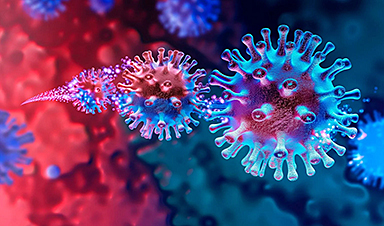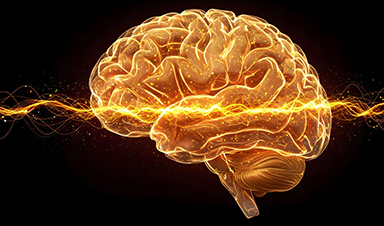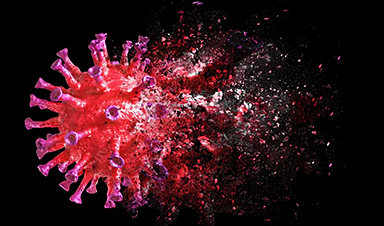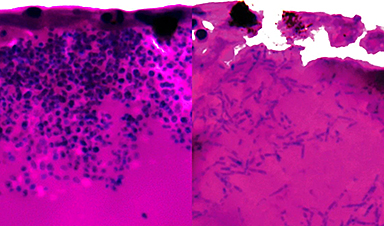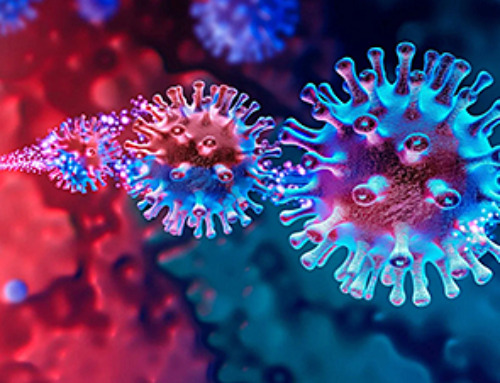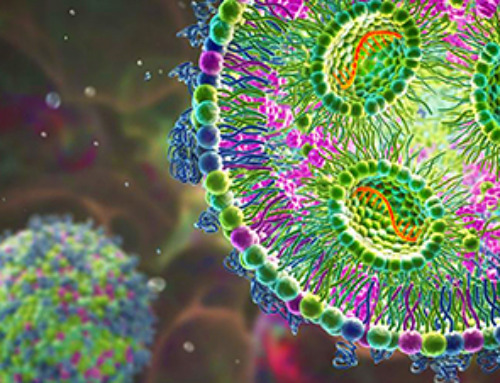If you wanted to uncover the secrets of the Universe for yourself, all you’d have to do is interrogate the Universe until it revealed the answers in a way you could comprehend them. When any two quanta of energy interact — irrespective of their properties, including whether they’re particles or antiparticles, massive or massless, fermions or bosons, etc. — the result of that interaction has the potential to inform you about the underlying laws and rules that the system has to obey. If we knew all the possible outcomes of any interaction, including what their relative probabilities were, then and only then would we claim to have some understanding of what was going on. Being quantitative in precisely this fashion, asking not only “what happens” but also “by how much” and “how often,” is what makes physics the robust science that it is.
Quite surprisingly, everything that we know about the Universe can, in some way, be traced back to the most humble of all the entities we know of: an atom. An atom remains the smallest unit of matter we know of that still retains the unique characteristics and properties that apply to the macroscopic world, including the physical and chemical properties of matter. And yet, an atom is a fundamentally quantum entity, with its own energy levels, properties, and conservation laws. Moreover, even the humble atom couples to all four of the known fundamental forces. In a very real way, all of physics is on display, even inside a single atom. Here’s what they can tell us about the Universe.

Here on Earth, there are approximately ~90 elements that occur naturally: left over from the cosmic processes that created them. An element is fundamentally an atom, with an atomic nucleus made of protons and (possibly) neutrons and orbited by a number of electrons that’s equal to the number of protons. Each element has its own unique set of properties, including:
- hardness,
- color,
- melting and boiling points,
- density (how much mass occupied a given volume),
- conductivity (how easily its electrons are transported when a voltage is applied),
- electronegativity (how strongly its atomic nucleus holds onto electrons when bound to other atoms),
- ionization energy (how much energy is required to kick an electron off),
and many others. What’s remarkable about atoms is that there’s only one property that defines what type of atom you have (and hence, what these properties are): the number of protons in the nucleus.
Every atom, with its unique number of protons in its nucleus, will form a unique set of bonds with other atoms, enabling a practically unlimited set of possibilities for the types of molecules, ions, salts, and larger structures that it can form. Primarily through the electromagnetic interaction, the subatomic particles that compose atoms will exert forces on one another, leading — given enough time — to the macroscopic structures we observe not only on Earth, but everywhere throughout the Universe.

News
COVID-19 still claims more than 100,000 US lives each year
Centers for Disease Control and Prevention researchers report national estimates of 43.6 million COVID-19-associated illnesses and 101,300 deaths in the US during October 2022 to September 2023, plus 33.0 million illnesses and 100,800 deaths [...]
Nanomedicine in 2026: Experts Predict the Year Ahead
Progress in nanomedicine is almost as fast as the science is small. Over the last year, we've seen an abundance of headlines covering medical R&D at the nanoscale: polymer-coated nanoparticles targeting ovarian cancer, Albumin recruiting nanoparticles for [...]
Lipid nanoparticles could unlock access for millions of autoimmune patients
Capstan Therapeutics scientists demonstrate that lipid nanoparticles can engineer CAR T cells within the body without laboratory cell manufacturing and ex vivo expansion. The method using targeted lipid nanoparticles (tLNPs) is designed to deliver [...]
The Brain’s Strange Way of Computing Could Explain Consciousness
Consciousness may emerge not from code, but from the way living brains physically compute. Discussions about consciousness often stall between two deeply rooted viewpoints. One is computational functionalism, which holds that cognition can be [...]
First breathing ‘lung-on-chip’ developed using genetically identical cells
Researchers at the Francis Crick Institute and AlveoliX have developed the first human lung-on-chip model using stem cells taken from only one person. These chips simulate breathing motions and lung disease in an individual, [...]
Cell Membranes May Act Like Tiny Power Generators
Living cells may generate electricity through the natural motion of their membranes. These fast electrical signals could play a role in how cells communicate and sense their surroundings. Scientists have proposed a new theoretical [...]
This Viral RNA Structure Could Lead to a Universal Antiviral Drug
Researchers identify a shared RNA-protein interaction that could lead to broad-spectrum antiviral treatments for enteroviruses. A new study from the University of Maryland, Baltimore County (UMBC), published in Nature Communications, explains how enteroviruses begin reproducing [...]
New study suggests a way to rejuvenate the immune system
Stimulating the liver to produce some of the signals of the thymus can reverse age-related declines in T-cell populations and enhance response to vaccination. As people age, their immune system function declines. T cell [...]
Nerve Damage Can Disrupt Immunity Across the Entire Body
A single nerve injury can quietly reshape the immune system across the entire body. Preclinical research from McGill University suggests that nerve injuries may lead to long-lasting changes in the immune system, and these [...]
Fake Science Is Growing Faster Than Legitimate Research, New Study Warns
New research reveals organized networks linking paper mills, intermediaries, and compromised academic journals Organized scientific fraud is becoming increasingly common, ranging from fabricated research to the buying and selling of authorship and citations, according [...]
Scientists Unlock a New Way to Hear the Brain’s Hidden Language
Scientists can finally hear the brain’s quietest messages—unlocking the hidden code behind how neurons think, decide, and remember. Scientists have created a new protein that can capture the incoming chemical signals received by brain [...]
Does being infected or vaccinated first influence COVID-19 immunity?
A new study analyzing the immune response to COVID-19 in a Catalan cohort of health workers sheds light on an important question: does it matter whether a person was first infected or first vaccinated? [...]
We May Never Know if AI Is Conscious, Says Cambridge Philosopher
As claims about conscious AI grow louder, a Cambridge philosopher argues that we lack the evidence to know whether machines can truly be conscious, let alone morally significant. A philosopher at the University of [...]
AI Helped Scientists Stop a Virus With One Tiny Change
Using AI, researchers identified one tiny molecular interaction that viruses need to infect cells. Disrupting it stopped the virus before infection could begin. Washington State University scientists have uncovered a method to interfere with a key [...]
Deadly Hospital Fungus May Finally Have a Weakness
A deadly, drug-resistant hospital fungus may finally have a weakness—and scientists think they’ve found it. Researchers have identified a genetic process that could open the door to new treatments for a dangerous fungal infection [...]
Fever-Proof Bird Flu Variant Could Fuel the Next Pandemic
Bird flu viruses present a significant risk to humans because they can continue replicating at temperatures higher than a typical fever. Fever is one of the body’s main tools for slowing or stopping viral [...]

